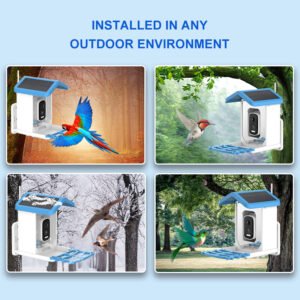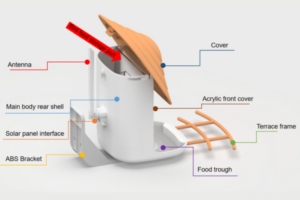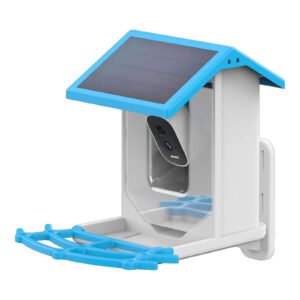Are you frustrated because birds aren’t visiting your feeder? Poor placement can lead to missed opportunities. In the wrong spot, your bird feeder might not attract the right birds or might even be unsafe. Let’s dive into the optimal positions for your bird feeder to ensure a steady stream of feathered visitors!
Finding the ideal spot for your bird feeder can make all the difference. From sun and shade to the right height and direction, this guide will help you place your feeder for maximum success. Learn where to position a bird feeder outside and avoid common mistakes.
In this article, we’ll explore various key aspects of bird feeder placement to maximize your chances of attracting a wide range of birds. Whether you’re looking to optimize your backyard, garden, or find a new way to set up a bird feeder without a tree, read on for expert tips!
What is the best location for a bird feeder?
The best location for a bird feeder is a quiet, sheltered spot that provides both safety and accessibility. Birds prefer places where they can feel secure, away from predators like cats or squirrels. Choose an area with a good view, preferably near trees or shrubs that offer cover but aren’t too dense. This ensures birds have an escape route if needed and can easily approach the feeder. The location should also be visible for your enjoyment, allowing you to observe the birds without disturbing them.
Should bird feeders be in the sun or shade?
Bird feeders can be placed in either sun or shade, depending on the climate and the types of birds you want to attract. In cooler climates, placing the feeder in the sun can help keep the seed dry and more appealing to birds. However, in warmer regions, offering shade is essential to prevent seeds from overheating and spoiling. Ensure that you also have a sheltered area to keep the feeder out of the rain, which can damage the seeds and make them less appetizing.
What direction should a bird feeder face?
Bird feeders should face a direction that offers shelter from strong winds and provides access to food. Ideally, position the feeder facing east or southeast to avoid the harsh afternoon sun, especially in warmer months. This orientation will protect the seeds from being exposed to the hottest parts of the day, keeping them fresh for longer. Also, consider any prevailing winds in your area and place the feeder so that birds don’t have to battle against strong gusts while feeding.
What is the 5 7 9 rule for bird feeders?
The 5 7 9 rule refers to the height at which to place your bird feeder, and it’s an excellent guideline for attracting a variety of birds. Ideally, you should position the feeder 5 feet from the ground to avoid ground predators but still be low enough for birds to feel comfortable. The 7 feet rule suggests placing the feeder at a height where it’s easy for you to refill but not too high for the birds to reach. The 9-foot rule refers to placing the feeder at least 9 feet from tree branches, reducing the chance of squirrels jumping onto it.
Do birds like feeders high or low?
Birds generally prefer feeders that are not too high or too low. Ideally, place the bird feeder at a height between 5 to 7 feet off the ground, allowing for easy access. A height that’s too low can attract predators or pets, while a feeder set too high might be difficult for smaller birds to reach. Additionally, you want to avoid placing the feeder at a height that is difficult for you to refill or clean.
How far away from the house should a bird feeder be?
The ideal distance from your house will depend on the type of birds you’re hoping to attract. Generally, bird feeders should be placed at least 10 feet away from windows to prevent collisions. However, keep the feeder within sight for easy observation. Additionally, ensure the feeder is located away from heavy traffic areas, ensuring birds feel safe from human disturbance. A good rule of thumb is to position the feeder near shrubs or trees, where birds can seek cover but far enough from areas where they may feel too exposed.
Summary
Positioning your bird feeder correctly enhances both your enjoyment and the safety of the birds. Make sure it’s in a quiet, secure spot!






